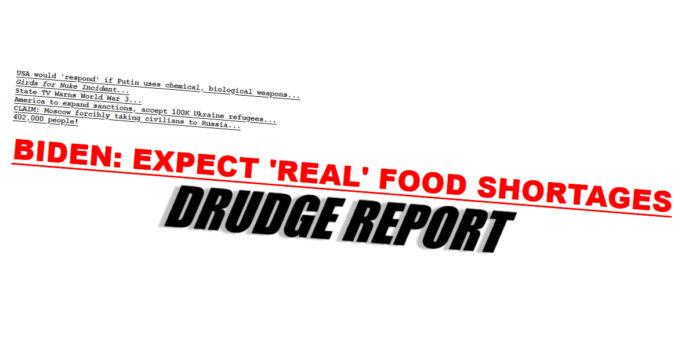When stories on the possibility of nuclear war, even a limited nuclear war, appear in newspapers from New York Times to the Seattle Times and on websites like Yahoo and the Drudge Report, you have to wonder why. Specifically, you have to wonder if the government is planting stories about the use of tactical nuclear weapons by Russia to “plow the ground” and prepare Americans to accept what once would have been not only unacceptable but unthinkable. Their theory is that by talking about it on the front page and on the evening news, it will seem less frightening if Putin uses nuclear weapons in Ukraine.
For years, the use of nuclear weapons has addressed only indirectly by the United States. When confronted by a new underground test or ballistic missile launch by North Korea, a spokesperson might say something that includes the phrase, “We are not taking any options off the table.” We all knew this was code for “We can nuke them if we have to.” This kind of polite talk went out the window when Putin tossed the nuclear option onto the table immediately following his troops crossing the Ukrainian border on their way to Kyiv.
Tough Talk
What bothers me most is that the UK and NATO are talking tougher than the U.S. This is the same president that declined to deliver Polish fighter jets to the Ukraine. Apparently, Joe is letting the threat of nuclear war get to him. We just have to hope that the Tiger Team of national security officials that was assembled to plan responses and options to a Russian attack using chemical or nuclear weapons is less tentative. If we fail to respond to the use of nuclear weapons, it will just encourage further use.
Tough talk does not seem to bother Putin. Our threats of sanctions before the war did not stop him. Now the sanctions are only making his position in Russia more tenuous and his perspective on the war more desperate.
Food Shortage Also Makes the News
Nukes weren’t the only thing on the front page of the Drudge Report. We have been warning you for weeks, but there it was in big red letters: “Expect ‘Real’ Food Shortages.”
You thought the empty store shelves were already bad? Wait until this news percolates down to the average shopper. I’d recommend hitting the warehouse club this weekend for one last stock up trip before the low-information shoppers realize that this is a problem that could affect them. You could do pretty well by buying: Pancake mix, flour, sugar, pasta, pasta sauce, peanut butter, canned meats, canned fish, canned vegetables and all the frozen food you can fit in your freezer.
Shortages of More than Just Food
It’s not only food that is in short supply, it is the means of production. The raw materials we need to produce food are scarce and getting more expensive. For example, the fertilizer large-scale farmers need to maximize harvests have tripled in price, assuming they can find it in stock. When you are talking about buying enough fertilizer for a couple thousand acres, that is a huge cost. Some farmers may not be able to afford it. Then there’s the cost, and coming shortage, of diesel fuel, which is used by all that fancy farm equipment to plant seeds, spray herbicides, and harvest the crop.
I read today that potato farmers in Idaho, the state we all associate with potatoes are buying seed potatoes from farmers in Maine. Why? Because the drought cut into last year’s harvest in the Western states. Maine farmers are also shipping potatoes to processing plants in Washington and Idaho to be made into French fries.
Bird Flu Hits Chickens
To stop the spread, 12.5 million chickens from infected farms in the U.S. have been incinerated or buried. Earlier this week, they had to euthanize 570,000 chickens on a single farm in Nebraska, where the bird flu outbreak has hit three poultry farms. That’s quite a few chickens and eggs that won’t be in your grocery store.
That will not only contribute to the food shortage, but it impacts everyone from commercial farmers to homesteaders. Backyard flocks can get bird flu as well. It can also impact hatcheries, meaning there are fewer chicks available for sale.
Let’s say you are taking the food shortage seriously and decide to raise your own chickens for eggs. If you run out and buy chicks today, you won’t see your first egg laid for five or six months. That’s the case with commercial egg layers as well. If officials force them to kill 100,000 birds, it takes at least five months before the replacement chickens lay eggs. If each chicken lays 26 eggs per month, that’s 15.6 million eggs that won’ be laid by the 100,000 birds that were euthanized. Now multiple that by a 100 other farms and you see the full extent of the problem.
During those five months during which no eggs are layed, farmers must feed the chickens, so they cost money even though they are not producing any income. My guess is that commercial chicken farms start a fresh batch of meat chickens every week for meat birds. That gives them a steady source of income. If all their chickens die at once and cannot be sold, they will have no income for two months for meat birds and six months for layers. I hope those farmers have insurance.
The Last Straw
We don’t know what disaster, big or small, will be the straw that breaks our society’s back. Will it be a food crisis? A nuclear war? Hyperinflation? A collapse of the American agricultural system? We won’t know until it is too late. All we can do until then is prep, with an intense focus on food.







